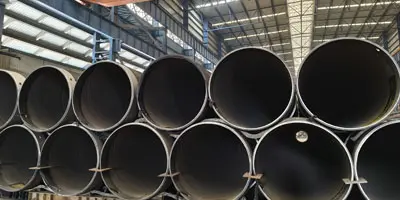Stainless steel structural pipes are strong and durable, not easy to rust, and look very textured, so they are often used in construction, machinery, food processing and other industries. However, no matter how good the material is, it is not omnipotent. If it is neglected for a long time, its surface may become dark, spotted, or even corroded. If you want it to keep its brightness, stable performance, and last longer, daily cleaning and maintenance are very important. Whether you use it indoors or outdoors in the wind and sun, this easy-to-understand maintenance guide can help you easily handle the daily maintenance of stainless steel structural pipes.
Stainless steel structural pipe includes various shapes such as round, square tube, and rectangular tube, made from materials like 304 and 316 stainless steel. These pipes can be seamless or welded, and are commonly used in construction, frameworks, railings, machinery, and decorative structures due to their strength, corrosion resistance, and clean appearance.

1.Keep the Surface Intact – Avoid Scratching Your Stainless Steel Structural Pipe
The surface of stainless steel has a protective layer that fights off rust and corrosion. If that layer gets scratched or damaged, the pipe becomes vulnerable.
Avoid using steel brushes, sandpaper, or rough tools when cleaning your stainless steel structural pipe. A soft cloth, warm water, or a neutral detergent is enough for regular cleaning. If you need to remove tough stains or fingerprints, use a non-abrasive sponge or microfiber cloth. The goal is to clean gently, not scrub harshly.Even during transportation or installation, always protect the surface with a cover or plastic wrap to prevent accidental scuffing.
2.Choose the Right Cleaning Agents for Stainless Steel Structural Pipe
Stainless steel is resistant, but not invincible. Harsh chemicals like bleach, chlorine, or strong acids can break down its protective layer. If your stainless steel structural pipe is installed in kitchens, industrial zones, or near the ocean, proper chemical care is key.Use mild cleaning agents — pH neutral cleaners are best. After cleaning, always rinse thoroughly with clean water and dry the surface to avoid water spots or chemical residue. For added protection, you can also apply a stainless steel care oil or anti-corrosion spray, especially in humid or coastal environments.
3.Stainless Steel Structural Pipe in Food or Pharma Use?
When stainless steel structural pipe is used in food processing, beverages, or pharmaceutical industries, hygiene matters just as much as appearance. Grades like 304 or 316 are food-grade stainless steels, but they still need proper maintenance.These pipes should be cleaned frequently using certified food-safe cleaning products. After each use or process, rinse with hot water and dry completely to prevent buildup. In these industries, cleanliness isn’t just about maintenance — it’s part of safety and compliance standards.
4.Don’t Forget the “New Pipe” Cleaning
Many people assume that new pipes don’t need cleaning. But in reality, stainless steel structural pipes may pick up oil, dust, or iron particles during storage, transport, or installation.Before putting them into service, especially if welding is involved, clean the surface to remove any residues. Use passivation if necessary to restore the protective oxide layer after welding. If there's any visible discoloration or potential contamination, take care of it immediately to avoid future corrosion.
5.Set Up a Simple Maintenance Routine for Stainless Steel Structural Pipe
A regular maintenance routine keeps your stainless steel structural pipe looking great and performing better. Here’s a simple plan anyone can follow:
Wipe off dust and surface grime weekly.
Use a mild detergent for deeper cleaning once a month.
Inspect for scratches, rust spots, or discoloration.
After chemical exposure, rinse and dry immediately.
Apply protective polish or oil in harsh environments (factories, outdoors, near saltwater).
Keep storage and handling areas clean to prevent contamination.
This kind of routine doesn’t take much time but will greatly extend the life of your stainless steel structural pipe.
6.Why Maintenance Matters for Stainless Steel Structural Pipe
Well-maintained stainless steel structural pipes can last for decades. But if neglected, even stainless steel can rust, stain, or lose its visual appeal. Regular care isn’t just about aesthetics — it’s also about safety, structural integrity, and avoiding unnecessary replacements.
At BAOWI Steel, we believe that the right materials combined with the right maintenance lead to long-term value.If you’re looking for high-quality stainless steel structural pipe, along with guidance on maintenance and cleaning, feel free to reach out to our team. We’re here to help with everything from selection and cutting to surface treatment and delivery.






 English
English Español
Español بالعربية
بالعربية











 Phone :
Phone :  Whatsapp :
Whatsapp :  Email :
Email : 


